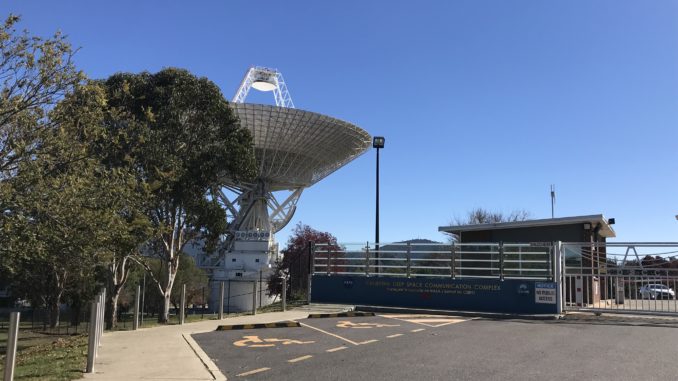
On the 20thof July 2019, we will commemorate the 50thanniversary of Apollo 11 moon landing. Australia played a crucial part to help the US achieve this ‘first time in the world’ accomplishment, as Australia’s antennas and aerospace engineers helped to monitor the radio signals of Apollo 11 and moreover, took over the responsibility to broadcast images of the moon landing thanks to Honeysuckle and Parks stations.
In 1962 Australia and the USA started their special partnership at a time where traveling to space was the synonym of conquest and race against the east. Today space is more than ever a place where cooperation is necessary and undeniable.
50 years after the first steps on the Moon, are all the country allies in space? What are the scientists expecting to discover? Why are the men trying to reach the limit of our universe? Why do we need to celebrate this anniversary?
New partnerships are in place, and Australia is working towards new space accomplishment with the creation of its own space agency in 2018, with space and rocket building and also by investing the private aerospace business sector.
Angle and Newsworthiness
Expensive, sometimes seemingly incensed, space travel and aerospace research have always raised crowds, either by support for the cause, whether by curiosity for the incredible nature of the task or because of the many arguments against it.
This article will not only focus on the anniversary of the first steps on the moon but will also put in perspective all the repercussion that aerospace research and achievement have had both at an Australian scale and at a global level. This anniversary is the perfect opportunity to rethink about the progress made since then and often overlooked. Whether in the context of this fiftieth anniversary or, more broadly, every day. The field of aerospace is an important aspect of the Australian economy as the government plans on expanding the industry to AU$10-$12 billion dollars per year by 2030. Australian space industry represents around $3.9 billion and employs about 10,000 people.
News values: human interest, timeliness, current hot-topic, proximity, relevance.
Genre
The following article is a ‘behind the news story’. By focusing on the anniversary of the first moon landing, we have the opportunity to have a better look at the aerospace industry’s most prominent challenges. By recollecting this moment of the past we open a space of discussion and reflexion towards the future of space-work in Australia.
The feature article could be written in the style of a ‘journal’ by borrowing to the genre the use of the ‘I’ in order to take the reader along in a journey through the reading. On the other, a simple ‘news telling’ style could also be adopted in order to help the reader focus on the important information and to keep the article simple, fast to read, and accessible to any kind of audience. Depending on the data that will be collected all along with the research for this article, a different approach of writing could be adopted.
Target Publications and Audience
A large scale of readers could be reached by this story. First, the older generation that was born, that was young or already adult around 1969. Secondly, the younger generations who are still dreaming about this time of discovery and exception, and that have been raised and are growing old with science-fiction’s TV-shows and books. Finally, the story has a ‘universal’ potential as it is natural for mankind to question life and the being. Trying to understand the universe and space is a fundamental aspect of this research for answers, therefore potentially everyone could be interested in this topic.
The targeted publication would depend on the final style of the article but potentially the article could be sent to the following publications.
The Junction: The website offers the possibility to Australian students to be published.
Other digital-publications: The Conversation, New Scientist, Live Science, National Geographic
Interviewees
– Glen Nagle: Outreach and Administration Lead NASA Operations Support Officer at the Canberra Deep Space Communication Complex.
– Michaela Forster: Assistant Director of Communications and Media at the National Archives of Australia.
– Heather McGirr: Media Relations and Communications Officer; Marketing, Sales & Distribution officer at the Royal Australian Mint.
-Flavia Tata Nardini: co-founder and CEO of Fleet Space Technologies,
– Moriba Jah: Famous space scientist raising awareness regarding space traffic issues and space environment monitoring and pollution.
– Warwick Holmes: Executive director of the space engineering program at the University of Sydney, known spokesman on the Australian aerospace industry development subject.
– Philippe Leureux: Famous conspiracy theorist
– Santo Cilauro, Tom Gleisner, Jane Kennedy, and Rob Sitch: scriptwriters and directors of the Australian movie, ‘The Dish’


Be the first to comment